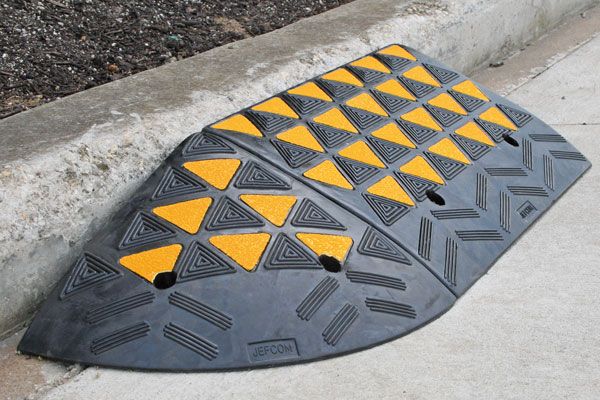Kerb ramps, also known as curb ramps or curb cuts, are an essential tool for improving access to businesses and homes. These ramps provide a smooth transition from the sidewalk or pavement to the road, making it easier for people with mobility challenges to navigate their environment.
In Australia, the Disability Discrimination Act 1992 requires that public places, including businesses and commercial buildings, provide access for people with disabilities. This means that installing kerb ramps at entrances and exits is not just a good idea – it’s the law.
But beyond meeting legal requirements, there are many benefits to installing kerb ramps. For one, they make it easier for people with mobility challenges, such as those using wheelchairs, walkers, or scooters, to access your business or home. This not only improves their quality of life, but it also shows that your business or home is inclusive and welcoming to everyone.
Additionally, kerb ramps are not just for people with disabilities. They can also be useful for parents with strollers, people pushing carts or luggage, and even for those using bicycles or skateboards. This means that installing kerb ramps can benefit a wide range of people, making it easier for them to access your business or home.
When it comes to installing kerb ramps, there are a few things to keep in mind. First, it’s important to make sure that the ramp is long enough to provide a smooth transition from the sidewalk to the road. It should also have a gentle slope, with a maximum gradient of 1:12, to make it easy to navigate.
Another important consideration is the surface of the ramp. It should be smooth and slip-resistant to ensure that it is safe to use. It’s also a good idea to include tactile paving on the ramp, which provides a tactile surface that can be easily detected by people with visual impairments.
Finally, it’s important to make sure that the ramp is properly marked and visible. This can be done with signs, markings on the pavement, or other visual cues. This helps to ensure that people with disabilities, as well as others who may benefit from the ramp, can easily find and use it.
In addition to the benefits mentioned above, kerb ramps can also improve the overall accessibility of your business or home. For people with mobility challenges, navigating the built environment can be a constant struggle. Sidewalks and pavements are often uneven and cluttered, making it difficult for them to move around. This can be especially challenging for those using wheelchairs or scooters, who may need to navigate around obstacles such as parked cars, poles, or other objects.
Kerb ramps can help to make the built environment more accessible by providing a smooth transition from the sidewalk to the road. This makes it easier for people with mobility challenges to navigate their environment, and can help to reduce the challenges they face on a daily basis.
Another benefit of kerb ramps is that they can improve the safety of your business or home. For people with mobility challenges, navigating the built environment can be dangerous, especially if they need to use the road to access your business or home. Kerb ramps provide a safe and easy way for them to transition from the sidewalk to the road, reducing the risk of accidents and injuries.
Additionally, kerb ramps can also improve the overall aesthetic of your business or home. Rather than being an eyesore, kerb ramps can actually add to the aesthetic appeal of your space. Modern kerb ramps are designed to be attractive and functional, and can be made from a range of materials, including concrete, asphalt, and even wood. This means that you can choose a kerb ramp that fits with the design of your business or home, and that adds to its overall appearance.
When it comes to installing kerb ramps, there are a few things to keep in mind. First, it’s important to choose the right location for the ramp. It should be placed at the entrance or exit to your business or home, and should provide a clear and easy route for people with mobility challenges to access your space.
It’s also important to choose the right type of kerb ramp for your business or home. There are a range of different types of kerb ramps available, including ramps with a curved or straight design, ramps with a flat or sloped surface, and ramps with a range of different materials. The type of kerb ramp you choose will depend on the specific needs of your business or home, and it’s important to consult with an accessibility expert to ensure that you choose the right ramp for your space.
Finally, it’s important to maintain your kerb ramp to ensure that it remains safe and functional. This can involve regular inspections, cleaning, and repairs, as well as making sure that the ramp is clear of debris and obstacles. By properly maintaining your kerb ramp, you can ensure that it remains a valuable resource for people with mobility challenges, and that it continues to improve the accessibility of your business or home.
In conclusion, kerb ramps are an essential tool for improving the accessibility of businesses and homes. By providing a smooth and safe transition from the sidewalk to the road, kerb ramps make it easier for people with mobility challenges to access your space. Additionally, kerb ramps can improve the overall aesthetic of your business or home, and can help to reduce the risks and challenges that people with mobility challenges face on a daily basis. By choosing the right location, type, and maintaining your kerb ramp, you can ensure that it remains a valuable resource for people with a wide range of abilities.
